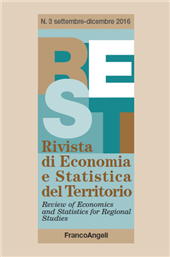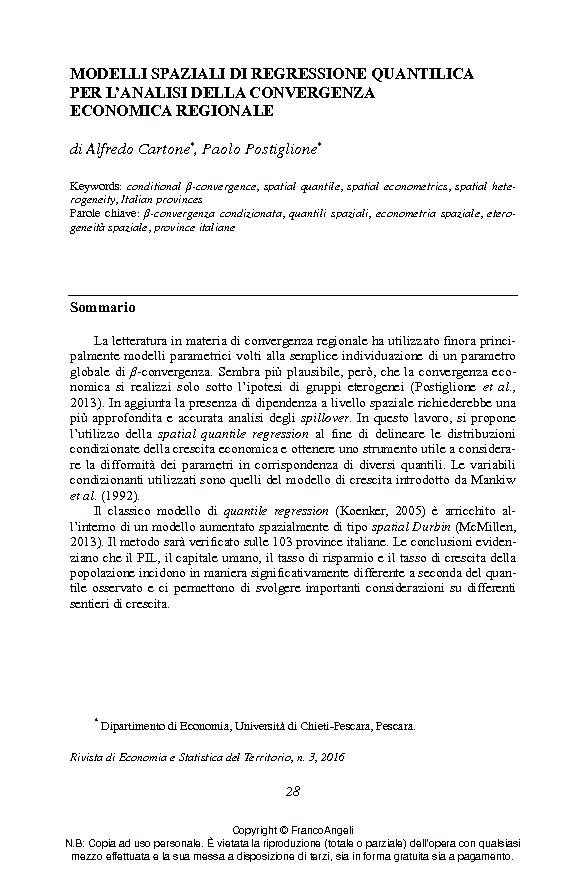Modelli spaziali di regressione quantilica per l'analisi della convergenza economica regionale
28-48 p.
In the last decade, a noteworthy issue in regional economic growth studies has been represented by the convergence problem. Many researchers, according to Solow's neoclassical growth model (1956), have noted that per-worker GDPs of poor regions tend to converge to those of richer regions. The assessment of this empirical tendency is a matter of primary relevance for policy makers. In this article the approach used is that of convergence (Barro and Sala-i-Martin, 1995). The paper estimates the conditional convergence model for 103 Italian provinces that correspond to NUTS 3 level of European Territorial Nomenclature. Methods and ResultsThis study adopts a quantile regression approach that allows for the inclusion of spatial effects (McMillen, 2013).
The model considered is a spatial Durbin specification of quantile regression estimated through a Double Stage Quantile Regression approach (Kim and Muller, 2004). The results highlight the importance of accounting for spatial dependence to increase representativeness and improve the estimated coefficients in the case of geographically distributed observations. Conclusions. The empirical evidence shows that per-worker GDP, human capital, the savings rate and the rate of population growth influence have significant different behaviour depending on the quantile observed. These results enable us to carry out considerations on different paths of development of the Italian provinces and on effects of heterogeneous spillover. [Publisher's Text].
Forma parte de
Rivista di economia e statistica del territorio : 3, 2016-
Artículos del mismo número (disponibles individualmente)
-
Información
Código DOI: 10.3280/REST2016-003003
ISSN: 1972-5000
KEYWORDS
- ß-convergenza condizionata, quantili spaziali, econometria spaziale, eterogeneità spaziale, province italiane
- Conditional ß-convergence, spatial quantile, spatial econometrics, spatial heterogeneity, Italian provinces



